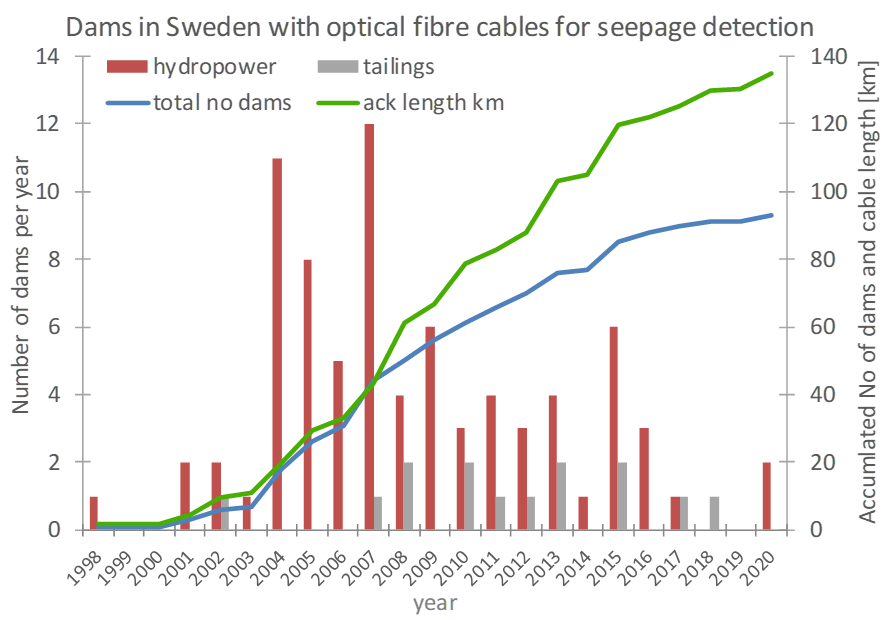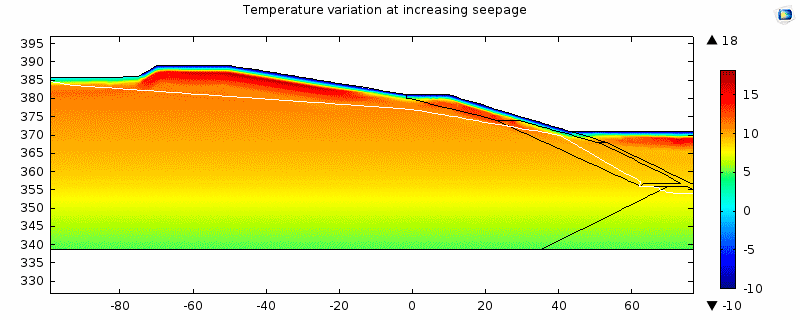Temperature measurements
For seepage detection in dams
Temperature measurements for seepage detection in embankment dams is one of the main areas HydroResearch has been working with since the start of the company. By extensive research and use of the method we are in the forefront in temperature data interpretation for seepage detection.
Distributed temperature sensing makes it possible with one cable installed along a dam to detect and distinguish areas with deviant seepage flow within a meter. This method is well established in Sweden, where over 90 installations of fibre optic cables has been made for seepage detection in embankment and tailings dams.
With knowledge from research and these installations HydroResearch provides premier services in this area:
- Design of distributed temperature sensing system for seepage detection
- Installation support
- DTS rental for short or long-term temperature measurements together with online presentation using XSeepT
- Annual evaluation of temperature data where continuous measurement is used
- Data interpretation and evaluation of short-term measurements

Fundamentals
The seepage evaluation method uses the natural seasonal temperature variation that occurs in all surface water (such as lakes, reservoirs and rivers). The seepage flow causes a seasonal temperature variation inside the dam. This seasonal temperature variation can be measured in the dam and used to evaluate the seepage flow. The approach is sometimes called passive method to distinguish from the active method where heat is added and the thermal response is evaluated.
Theoretical analyses and field experience show that a significant interrelation between seepage flow and temperature response exists in an embankment dam. The temperature field is mainly given by seepage flow from the reservoir where seasonal temperature variation occurs, and by heat conduction from the surface creating a seasonal variation that can be ignored about ten meters below the dam surface. The temperature field inside the dam will thus be a result of the seasonal temperature variations on the surface of the dam and on the seepage flow rates passing through the dam. With increasing distance from the interface boundary between the reservoir water and the embankment there will be attenuation and a time lag of the seasonal variation. Effects of snow melting and heavy rain will also cause sudden temperature changes. All these thermal processes can be simulated by numerical modelling.

